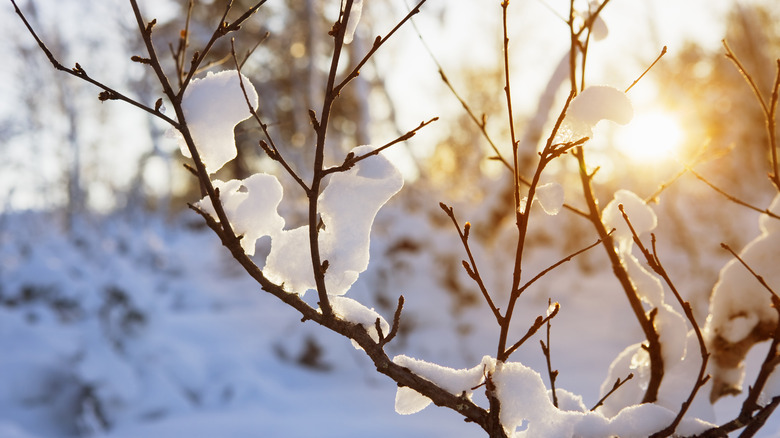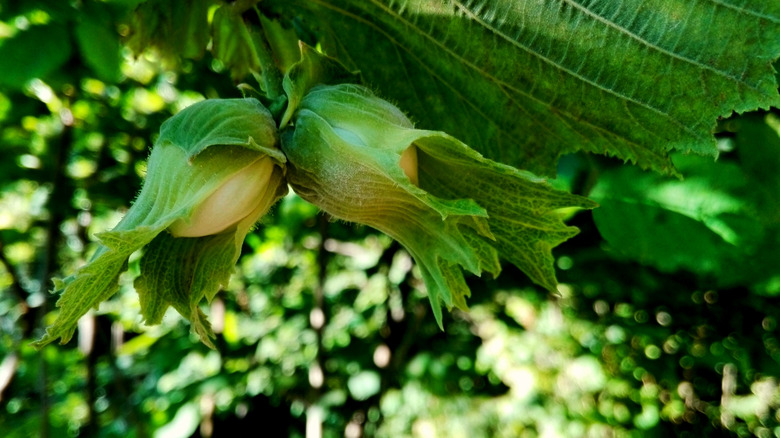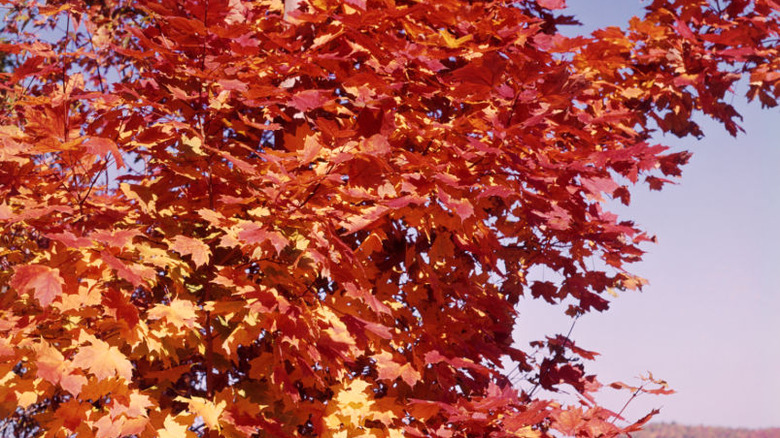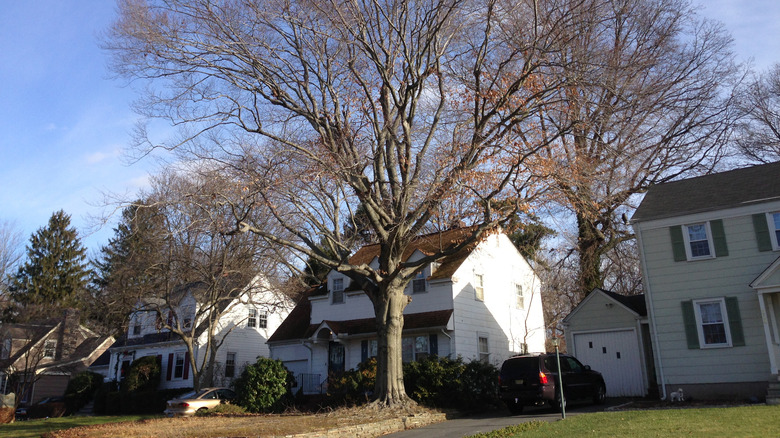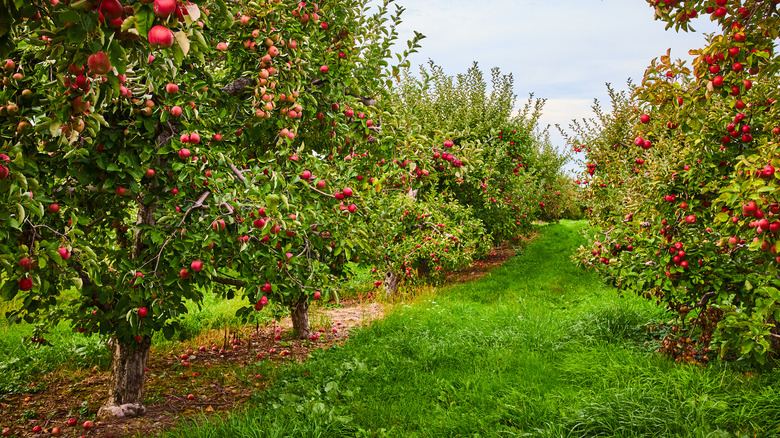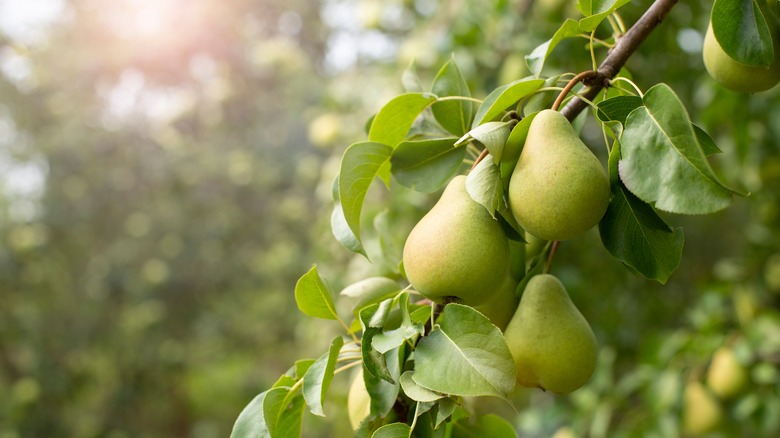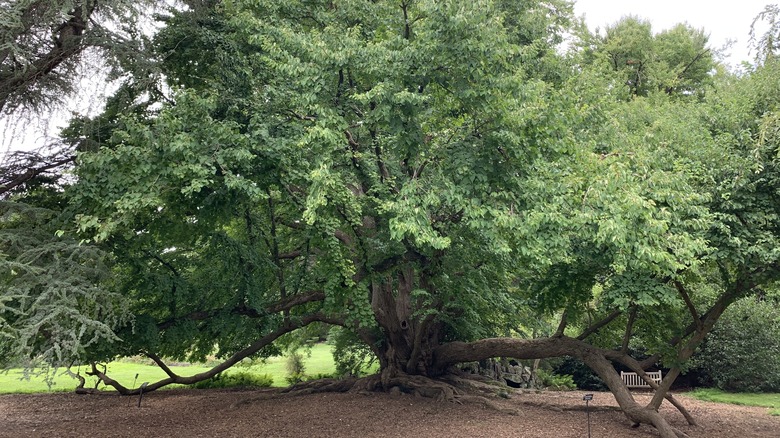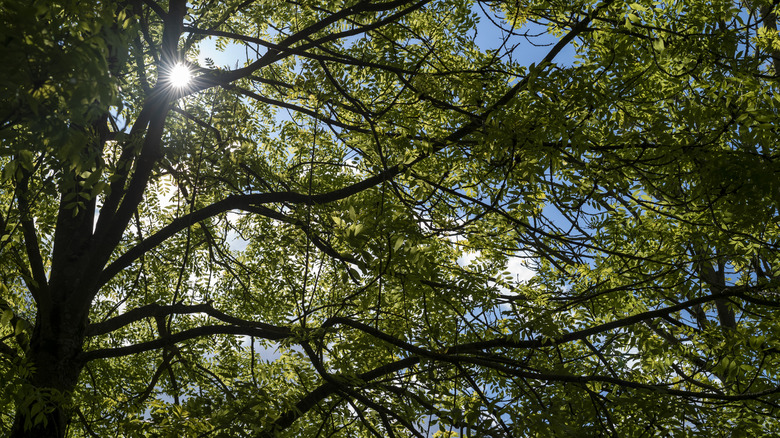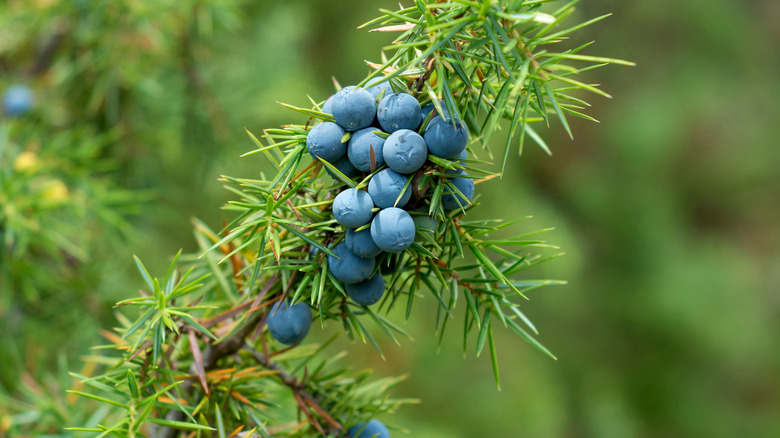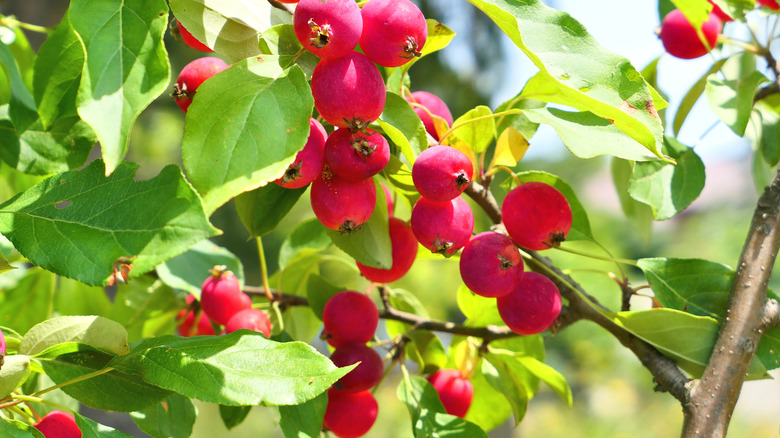9 Trees You Should Absolutely Prune In Late Winter
An important step to caring for your trees is to prune them regularly. This trimming process helps to fight against harmful tree diseases and infestations while also giving you the chance to get rid of any dead leaves or branches. But before you grab your shears and start hacking away, it's a good idea to know the most ideal time to prune the types of trees you have. In the case of particular evergreen trees such as spruce and firs or shade trees like maples, and varieties of deciduous trees, it's best to prune these trees in the winter months.
There are various tree pruning mistakes that you want to avoid but by cutting back certain trees while they are in their winter dormant stage, you can improve their overall health without worrying about harming any new growth that comes during the spring months. It can also be easier to prune trees in later winter thanks to the fact that the lack of leaves makes it easier to see what needs to be done and allows you to shape the tree without a visual hindrance. That's not to mention the fact that cutting parts of your tree in the late winter means that there won't be an excessive amount of time between the initial cut and the spring when it's able to start healing and regrowing. Although various trees can benefit from this kind of attention throughout the years, there are a few trees that you will absolutely want to prune in late winter.
1. Hazel trees
One variety that can live for a considerable amount of time, hazel trees (Corylus avellana) are a type of plant that can benefit from being pruned just a touch, trimmed of all its leaves and branches, or fully cut down to the ground. A good clearing out of dead or dying limbs can increase the light that reaches the canopy which will increase the amount of buds which in turn will yield healthier nuts. Older trees can benefit from more pruning than when in their younger stages, and suckers should be removed every year during the late winter.
2. Sugar maple trees
The unmistakable beauty of the sugar maple tree (Acer saccharum) can be best witnessed in autumn when the leaves change color to vibrant shades of red, orange, and yellow. To keep your maple tree looking its best year after year, you should consider pruning any loose branches at the tail end of the winter months. First, remove loose and dead limbs so you don't risk them falling on passersby, then trim any concerning branches above the collar of each branch, but be sure to not take away more than a quarter of the limbs yearly.
3. Beech trees
A popular tree that can be found in yards to provide privacy, stunning beech trees (Fagus grandifolia) can live quite a long time and require little pruning when they have reached maturity. However, when they're still establishing themselves, be sure to prune them during late winter right up until the beginning of spring. First, this will benefit the overall health of the plant by getting rid of potentially problematic branches. Secondly, it will keep it from growing too big if you'd rather it stay a size that you're still able to take care of.
4. Apple trees
Although you're surely focused on harvesting your apples when the time is right, you should also give the apple trees (Malus domestic) in your yard a little TLC when late winter rolls around. In fact, pruning your apple tree in the winter gives you the chance to trim it into a manageable shape, which will make it easier to pick the fruit when the opportunity comes. If your tree hasn't been pruned in some time, then you should clear out old inner branches and then prune up to 5 feet of top growth to help spark new life.
5. Pear trees
If you have an apple tree, then you might also be eager to grow a pear tree (Pyrus communis). They can both be pruned in the late winter however, pear trees are best pruned into a vase-like shape, and trimming the dead and damaged branches can help to keep the tree healthy while cutting certain areas back will provide room for the fruit to grow when you welcome the warmer weather. Pear trees also tend to grow a fair share of spurs which you can also get rid of when you prune your tree in late winter.
6. Katsura tree
Late winter is the ideal time to give your katsura tree (Cercidiphyllum japonicum) some needed attention. While pruning might be required every few years, you'll want to check for potential problems whenever the chilly season starts to wind down. To promote strong branch growth, you need to prune any loose or broken branches, which are fairly common with this species of tree. A good pruning routine can also strengthen the collar of the branches and eliminate any unwanted crowding.
7. Green ash trees
The common green ash (Fraxinus pennsylvanica) requires a regular pruning routine in the late winter season especially when they are quite young. If left to its own devices, the green ash may develop multiple dominant trunks which would not benefit the tree in the long run. Once mature, thinning of the branches will increase airflow and tree health and hopefully deter borers, their most common pest.
8. Juniper trees
Pruning juniper (Juniperus communis) anytime during the fall or early winter can harm the tree as it will be raw and open in the spot where you've cut it when the freezing weather sweeps in — damaging the plant. Instead, wait until the nasty weather has passed in late winter. You'll also want to start trimming your juniper tree before new growth begins to pop up in spring. Junipers won't tolerate heavy pruning, instead, stick to minimal tip pruning and focus on clearing out dead growth near the bottom to improve overall health.
9. Crabapple trees
Just like their big apple tree siblings, crabapple trees (Malus baccata) should also be pruned during late winter. Although they don't require a lot of fussy TLC, you will want to do the same as you do with your other trees and check them for any issues. Just be sure to wait until the harsh winter conditions have passed but before the buds have developed. Remove any sprouts or suckers and by pruning crossed or crowded branches, you'll help to encourage air to flow in and around the tree which will, in turn, keep diseases at bay.
